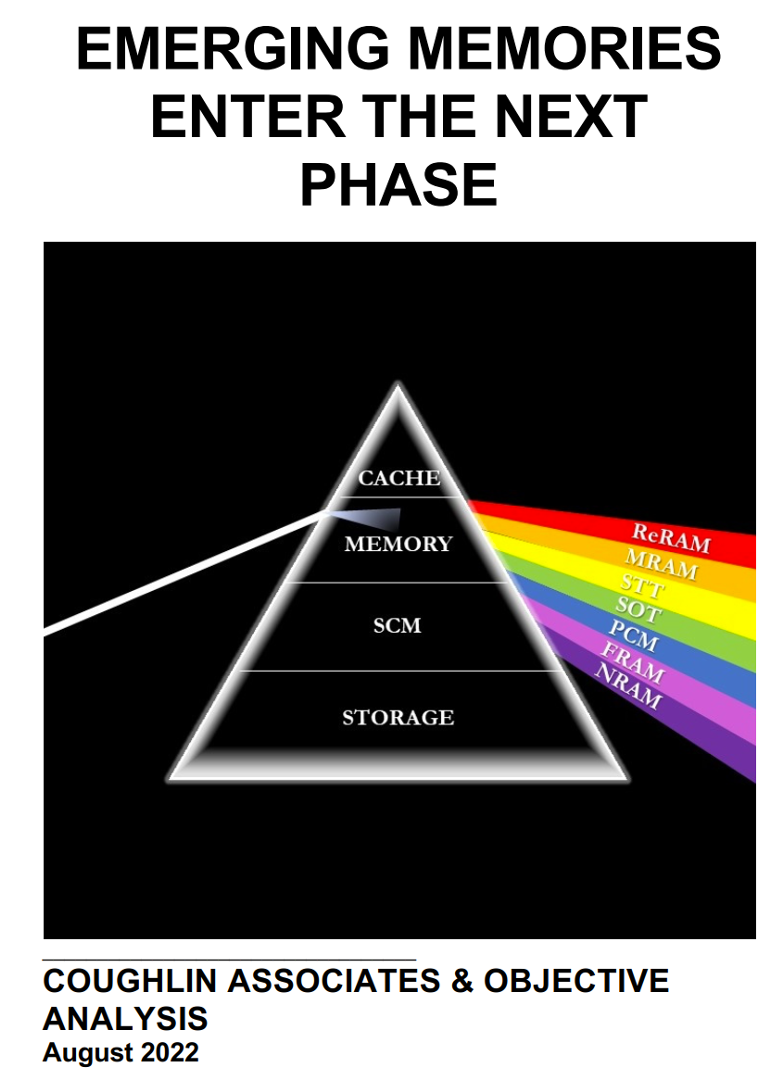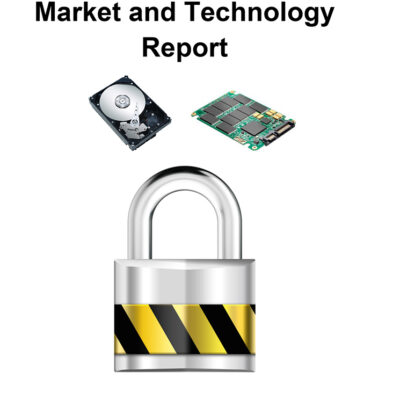Description
Current memory technologies including flash memory (NAND and NOR), DRAM and SRAM are facing potential technology limits to their continued improvement. As a result, there are intense efforts to develop new memory technologies. Most of these new technologies utilize nonvolatile memory technologies and can be used for long-term storage or to provide a memory that does not lose information when power is not applied. This offers advantages for battery and ambient powered devices and also for energy savings in data centers.
The memories addressed in this report include PCM, RRAM, FRAM, MRAM, STT MRAM and a variety of less mainstream technologies such as carbon nanotubes. Based upon the level of current development and the characteristics of these technologies, resistive RAM (RRAM) appears to be a potential replacement for flash memory. However, flash memory has several generations of technologies that will be implemented before a replacement is required. Thus, this transition will not fully occur until the next decade at the earliest.
Micron and Intel’s introduction of 3D XPoint Memory, a technology that has high endurance, performance much better than NAND, although somewhat slower than DRAM, and higher density than DRAM; is impacting the need for DRAM. Intel introduced NVMe SSDs with its Optane technology (using 3D XPoint) in 2017 and started shipping DIMM-Optane modules in 2019. 3D XPoint uses a type of phase change technology.
Magnetic RAM (MRAM) and spin tunnel torque RAM (STT MRAM) are starting to replace sNOR, SRAM and possibly DRAM. The rate of development in STT MRAM and MRAM capabilities will result in gradually lower prices, and the attractiveness of replacing volatile memory with high speed and high endurance nonvolatile memory make these technologies very competitive, assuming that their volume increases to reduce production costs (and thus purchase prices).
Ferroelectric RAM (FRAM) and some RRAM technologies have some niche applications and with the use of HfO FRAM the number of niche markets available for FRAM could increase in number.
Moving to a nonvolatile solid-state main memory and cache memory will reduce power usage directly as well as enable new power saving modes, provide faster recovery from power off and enable more stable computer architectures that retain their state even when power is off. Eventually spintronic technology, that uses spin rather than current for logic processes, could be used to make future microprocessors. Spin-based logic could enable very efficient in-memory processing.
The use of a nonvolatile technology as an embedded memory combined with CMOS logic has great importance in the electronics industry. As a replacement for a multi-transistor SRAM, STT MRAM could reduce the number of transistors and thus provide a low cost, higher-density solution. A number of enterprise and consumer devices use MRAM, acting as an embedded cache memory, and all of the major foundry companies are offering MRAM as embedded memory in SoC products.
The availability of STT MRAM has accelerated this trend and allows higher capacities. Because of the compatibility of MRAM and STT-RAM processes with conventional CMOS processes, these memories can be built directly on top of CMOS logic wafers or potentially incorporated during CMOS manufacturing. Flash memory doesn’t have the same compatibility with conventional CMOS. The power savings of nonvolatile and simpler MRAM and STT MRAM when compared with SRAM is significant. As MRAM $/GB costs approach those of SRAM, this replacement could cause significant market expansion.





Reviews
There are no reviews yet.